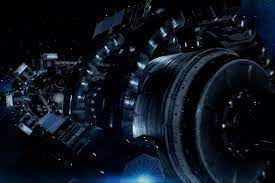
PLAN INTERSTELLER TRAVEL
INTRODUCTION:

Interstellar travel refers to the concept of traveling between stars within a galaxy. It is a form of space travel that does not violate known physics and has been a subject of interest for scientists and science fiction writers alike.
Interstellar travel is the hypothetical travel of spacecraft between star systems. Due to the vast distances between the Solar System and nearby stars, interstellar travel is not practicable with current propulsion technologies.
To travel between stars within a reasonable amount of time (decades or centuries), an interstellar spacecraft must reach a significant fraction of the speed of light, requiring enormous energy. Communication with such interstellar craft will experience years of delay due to the speed of light.
WORKING OF INTERSTELLER:
To travel between stars within a reasonable amount of time (decades or centuries), an interstellar spacecraft must reach a significant fraction of the speed of light, requiring enormous energy. Communication with such interstellar craft will experience years of delay due to the speed of light.
BENEFITS OF INTERSTELLER TRAVEL:
Expansion of Human Presence Beyond Earth
- Survival of the Human Species: One of the most significant benefits of interstellar travel is the potential for humanity to become a multi-planetary species. By establishing colonies on other planets or moons in distant star systems, we can ensure the long-term survival of our species. This could serve as a backup for humanity in the event of a catastrophe on Earth (e.g., asteroid impacts, climate change, or other existential threats).
- Exploration and Discovery: Interstellar travel offers the potential for profound scientific discoveries. By exploring other star systems, we could learn more about the origins of the universe, the possibility of extraterrestrial life, and the conditions that make a planet habitable. This could not only satisfy our innate curiosity but also advance our understanding of space, life, and the cosmos.
2. Technological and Scientific Advancements
- Driving Innovation: The challenges associated with interstellar travel would require breakthroughs in propulsion, energy, materials science, life support, and many other fields. These advancements could spill over into other sectors, benefiting technologies we rely on today, such as space exploration, medicine, and energy production. For example, developments in energy-efficient propulsion or life support could lead to innovations that improve life on Earth.
- Inspiration for Future Generations: The pursuit of interstellar travel would inspire future generations to push the boundaries of science and technology. The quest to travel to distant stars and explore the unknown could be a powerful catalyst for STEM (Science, Technology, Engineering, and Mathematics) education, innovation, and global collaboration. It would also encourage people to think long-term and focus on addressing global challenges like sustainability and resource management.
CHALLENGES OF INTERSELLER TRAVEL
- Distance: The nearest star system to Earth, Alpha Centauri, is about 4.37 light-years away. This is an immense distance, and current spacecraft technology is nowhere near fast enough to reach it in a human lifetime.
- Time: Even with the fastest spacecraft we have today, like the Parker Solar Probe, which travels at around 700,000 km/h (about 0.06% of the speed of light), it would take thousands of years to reach another star system.
- Energy: Interstellar travel would require immense amounts of energy. Our current propulsion systems are not nearly powerful enough for such long distances.

